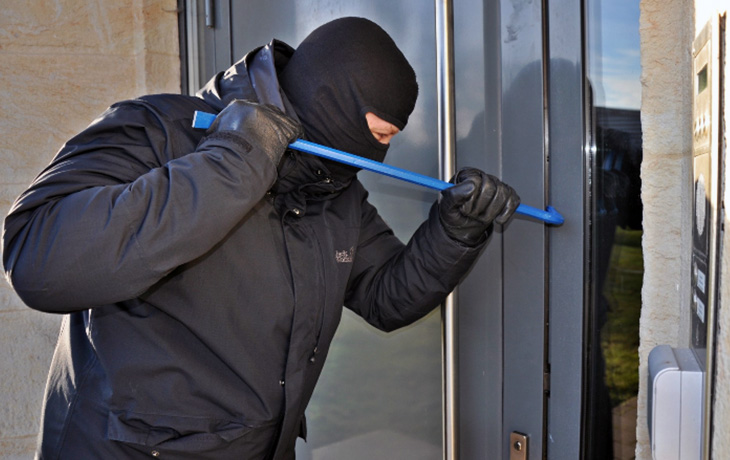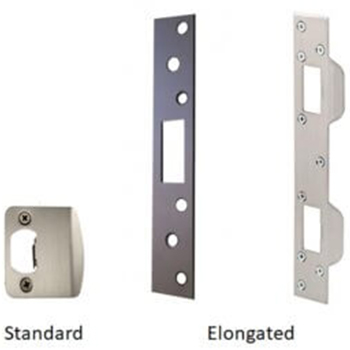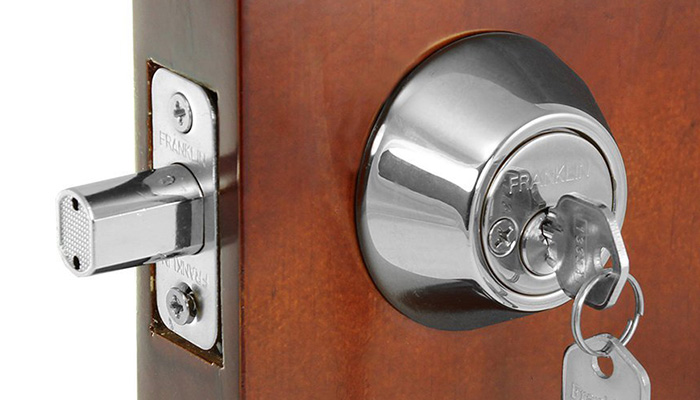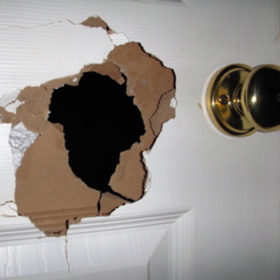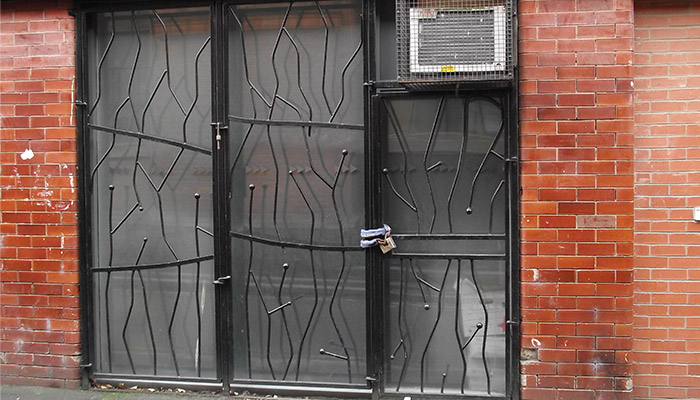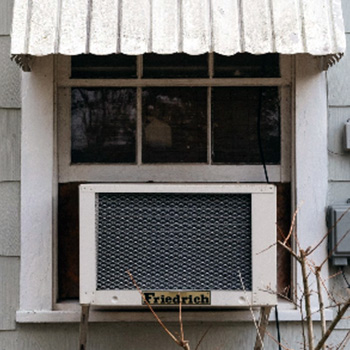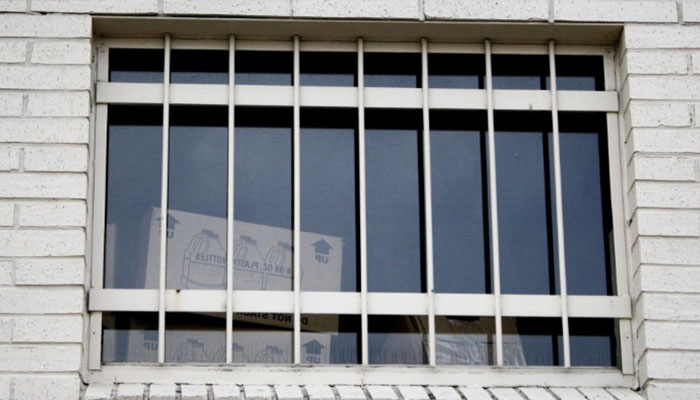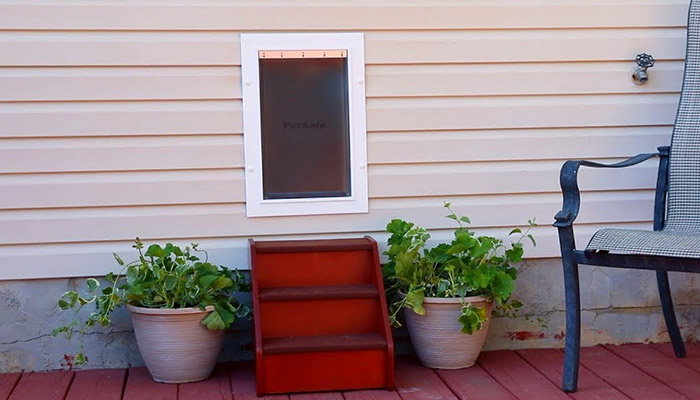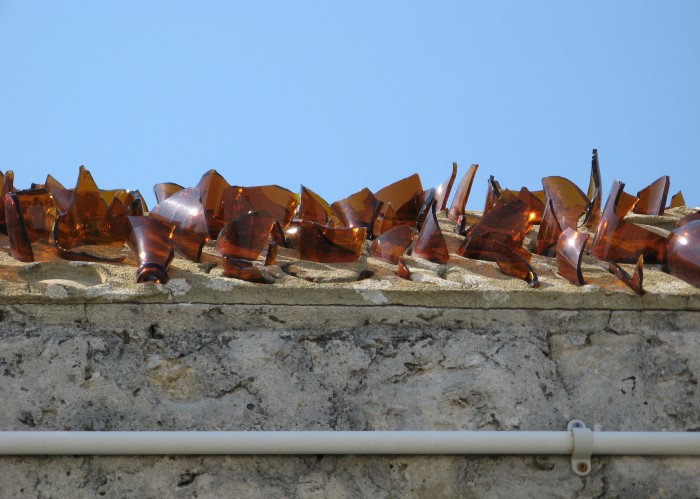“Hardening” a home means making it harder to break into and harder to try without being seen.
Hardening your home isn’t about one specific thing — it’s a combination of little things and layers that add up. Together, those layers deter many people from even trying, and if they do, they’re more likely to quit from frustration and less likely to be successful in the end. And even if they do get in, alarms and cameras make it more difficult to get away with.
Many of these tactics and products are affordable and relatively easy to do as a weekend project. There are more advanced things to do once you’ve got these basics covered, such as reinforcing door jambs and creating safe rooms, but even these simple steps will make a big difference.
Renters are statistically more likely to be broken into compared to homeowners. That seems logical because renters are less likely to invest in permanent security measures. But the landlord doesn’t have much of an incentive either — home invasions typically focus on the stuff inside the home, and those costs will be eaten by the renter, not the landlord.
Even if you’re on a short-term lease in a place you don’t care about, there are still quick and cheap ways to improve your safety. Just $1 worth of screws in your door jamb can make a big difference.
This guide gives some quick product recommendations, and will be updated over time with links to specific reviews of each product category.
Summary:
- The average home (ie. hasn’t followed at least some of the steps in this guide) is much weaker than people expect — but you can make meaningful improvements on any budget and skill level.
- Think of security in layers that work together.
- The first line of defense is deterrence: make a would-be intruder think twice by making yourself less of an easy or attractive target.
- Perimeter barriers like fences and gates are the next layer, but often need the most investment of anything on this list.
- Motion-activated lights and cameras protect the zone immediately around the home.
- First-floor doors and windows are by far the most common points of entry, so focus on hardening those points, particularly around where the door hardware is attached to the surrounding frame.
- Security systems and dogs will discourage intruders, give you intel, and potentially end the threat.
- Don’t forget the small stuff like actually remembering to lock your doors or closing window coverings! Smart home devices can help, such as locks that automatically engage when you leave.
- Use your head when hiding backup keys. That cheap plastic “secret rock” a few feet from your door is not nearly as stealthy as you think it is.
- Booby traps are usually illegal and asking for legal trouble.
Here’s an example collection of products that will drastically strengthen your home for only $200. (More example kits at various budgets at the bottom.)
Understanding the threats
Whether it’s burglary, home invasion, domestic abuse, government oppression, an angry mob during civil unrest, or a gang trying to get your supplies after SHTF, the point is the same: Our modern “castles” are actually made of flimsy materials with plenty of weaknesses for attackers to exploit for entry.
In addition to years of experience researching and following the tips on this page for our own homes, we also interviewed experts (eg. police officers in high-crime areas) and dug into the data around burglaries and home invasions to understand not only the common weak spots, but how attackers who plan ahead of time think and act differently than attackers acting on impulse.
Almost all home invasions require some sort of forceful entry, such as breaking a window, disabling a lock, or kicking in a door. That’s why this guide focuses on those points of entry.
Make your home less attractive
The appearance of strength is sometimes just as important as strength itself. Common burglars, for example, are specifically looking for easy targets and will move on if your home seems harder than the next one.
That’s why July and August are the months burglars are most active — they know people are more likely to be away from home on summer vacation.
Stickers and signage
This is a well-worn trick, but even if you don’t have actual cameras, alarm systems, dogs, etc., advertising that you do might make the difference. Do fake security stickers work? They can, though experienced criminals may see through the facade and know that you have something valuable you are trying to protect.
Many security systems will come with stickers or other signage to put around the house. Use them!
You can also buy signage directly. Here’s an example search on eBay.
Don’t just focus on signs about cameras and alarms. Warning about dogs, firearms, crazy in-laws, and other disincentives can be equally effective.
Use your head: Don’t broadcast wealth or supplies
A lot of this is just common sense. Bought an awesome $5,000 TV? Don’t leave the box on the curb for days.
Even though we’re big advocates of being more vocal about your prepping with your inner circles, you clearly don’t want to broadcast to the public “this house has food, medicine, and ammo!” So be mindful of how your house sticks out from your surroundings — particularly things that might indicate “this person’s prepared,” such as large radio antennae, water barrels, shooting targets, etc. that are visible from the street.
Packages, garbage, and other signs you’re away
Even if you ignore the awful aggravation of “porch pirates,” as ecommerce shopping has exploded, delivery boxes have become a major signal to intruders that you’re away.
Besides asking neighbors to take packages, you can also use a smart lock to let delivery people drop boxes off inside your door. Or you can ask the mail carrier to hold your packages:
- Amazon Packages can be delivered to an Amazon locker.
- FedEx has the Delivery Manager, which allows you to place holds and change delivery location.
- UPS MyChoice will send you alerts, delivery dates, and expected delivery times. You can also re-route, reschedule, and leave instructions for your driver.
- USPS allows you to have packages delivered to your door, back porch, neighbors home, or held at your local post office.
Be prepared. Don’t be a victim.
Want more great content and giveaways? Sign up for The Prepared’s free newsletter and get the best prepping content straight to your inbox. 1-2 emails a month, 0% spam.
Hardening existing doors
Doors are the #1 way intruders get in. 34% of burglars enter through the front door, and 22% come in through a back door — that’s over half of all break-ins.
Yet your door is likely far weaker than you expect. The Victoria (Texas) Police Department explains:
Don’t use the same keys
Whether you’re renting or buying, too many people use the same locks and keys the previous people did. Change them!
If you’re renting, it’s best to negotiate this before you sign your lease — you may be able to get the landlord to cover the cost as part of a move-in incentive. Regardless, you’ll obviously need to let the landlord have a copy of the new keys, but at least any previous tenants, ex-lovers, repair people, etc. will be out of luck.
If you just have one or two doors, changing the whole lock assembly (which comes with a new key) will be the cheapest option. A Kwikset door knob and deadbolt combo will cost ~$50 and it’ll take you 10 minutes with a basic screwdriver.
If you have multiple locks to change, leaving the core hardware but changing the keys may be the best option. It typically costs $20 per door with a base service charge of $75-100 from your local locksmith.
Some locks like the Kwikset smartkey and Schlage SecureKey allow you to re-key your lock at home without the help of a locksmith. Some higher end locks like Medeco and Mul-T-Lock require specialized tools and can be cost prohibitive.
Replace factory screws with stronger ones
Your door hardware is likely cheap — whatever came in the package from the manufacturer or was in the random box of screws the original installer used. Factory screws tend to be 0.5 inches long.
But if the strike plate, lock/bolt, and hinges aren’t securely anchored to your home, then how can they stand up to a brute force attack?
You should replace those tiny screws with 2-3” wood screws — which will only cost $1 per door (if that). Even though nothing else about your door changes, these deeper anchors in the strike plate make it much harder for someone to kick the door open.
Upgrade the strike plate
Stronger screws in the factory strike plate will help, but with enough force, the entire plate and two screws can be pushed through the soft wood holding them in place.
Upgraded strike plates help by multiplying the number of screw points, spreading the force of a kick over a much wider area, and reinforcing the wood with the strength of the metal brace. That makes it less likely the wood will split apart, because each screw gets less force from a kick.
You can buy just a strike plate, but many of the available kits also come with an extra piece or two to beef up all of the weak spots. Our team has used popular products like Door Devil, Door Armor MINI and the generic and inexpensive Defender, with success.
Security barricades
The extra lock you flip over the crack of a hotel room door once you’re inside the room is an example of a barricade. Acting as a backup in case the door locks fail, these devices are just different ways of putting something strong against the direction of door travel so that it can’t swing open.
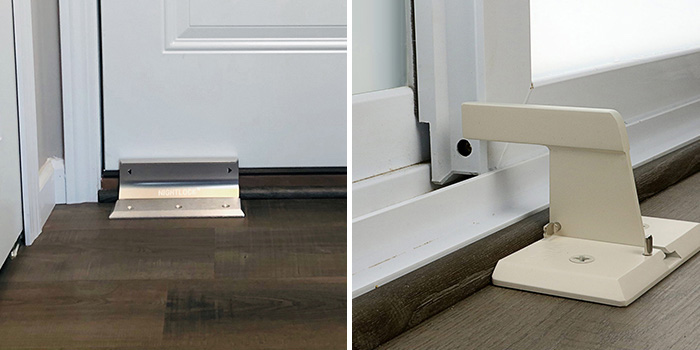
To secure sliding doors, you can make something yourself out of a piece of metal or wood that wedges in between the frame and sliding portion, preventing it from moving. There are also pre-built products like a simple ground bar, a better flip-down bar that holds the door in the middle, or various styles of extra locks. We tend to prefer the professional products for ~$20 more than the DIY routes because it makes things look more polished in main living areas.
More: Best door reinforcements and hardware
Don’t forget your garage door
Even though most people never actually use them, many garage doors already have locks built in. If yours doesn’t, you can easily add them for only ~$10 each.
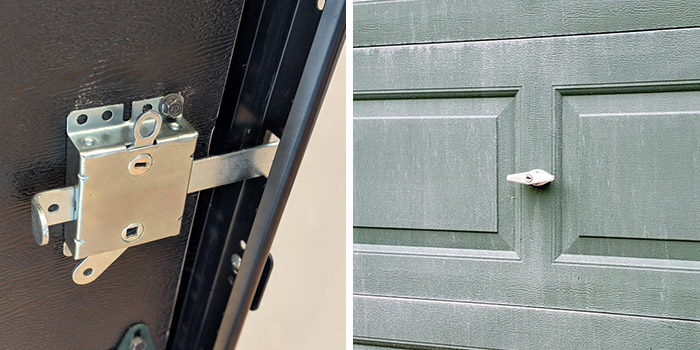
New doors
Deadbolts are the minimum for exterior doors
Any swinging door that’s accessible from outside your home should at least have a deadbolt. It’s such a no-brainer that most homes already have external deadbolts.
A normal doorknob is not designed for security — even if it has a lock built in. The mechanical design is just meant to keep the door from swinging around and, if there’s a lock, to prevent people in the house from accidentally walking in on you while you’re doing the Macarena in the nude.
If you find an external door without a deadbolt, that probably means there isn’t a pre-cut hole for the deadbolt to sit (which is typically above the normal doorknob). If that’s the case, you’ll need to buy a new door that can hold the deadbolt.
Solid vs hollow-core doors
Most modern doors (especially interior doors) are built to be lightweight so they’re cheaper to make/ship and easier to swing. Which means you can poke your way through without much effort.
Doors marketed as exterior doors (eg. at Home Depot) are more robust with solid materials throughout. You can buy a metal door, which helps, but know that the weak point is still the wood the metal door is attached to.
Tip: The residential market is sometimes limited, so try searching for security doors meant for businesses, schools, etc. Here’s an example.
Adding a second security door
Regardless of what you do to the main door, you can add a second security door. They’re essentially storm doors that are built a little tougher, often made of metal and metal mesh with at least a deadbolt and reinforced knob area.
A nice bonus to these second layers is that you can leave your main door open for airflow, visibility, etc. without leaving your entry open to intruders.
Windows
23% of burglars enter through a first-floor window (2% go through higher floors), making windows the #2 point of entry behind doors.
Window air conditioners are a prime target
Intruders like seeing A/C units hanging in a window because that usually means the window strength is already handicapped — to the point that, in many cases, all someone needs to do is slide the window the rest of the way open. Or the intruder can just give the A/C unit a shove inwards and voila, open entryway!
If possible, put your A/C in windows that are harder to reach from the ground without crawling over plants, furniture, trash, etc. Try to place units in windows where an intruder would be easily seen by the public if they kicked in the unit.
Do your best to use barriers, wedges, etc. to really lock that window down around the A/C. Some of the general window products below might work, depending on your situation.
If you end up with a security system, make sure these windows have movement sensors on or near them. Don’t just rely on glass-break audio sensors since the intruder might get in without breaking glass.
Window locks
If you have sliding windows, add an extra line of defense on top of the factory locks. Aftermarket window locks clamp onto the frame to prevent it from being forced open. A pack of 10 costs just $15 and takes seconds to install. Window locks can also be used on sliding glass doors.
Tactical bushes
Eat your heart out Bob Ross! Happy bushes and shrubs placed in strategic locations will deter many intruders and make it slower and noisier for anyone who still tries.
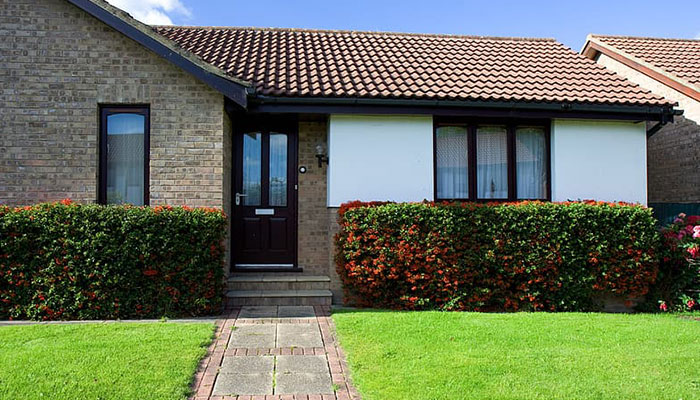
Tip: If you’ve got space to fill but can’t do it with plants, think about other ways to accomplish the same thing. Wall-mounted garden hose holders are a good example.
Bars
Burglar bars (ie. window security bars) make it physically impossible for someone to squeeze through, even if the window is broken or open. Since they’re made of metal, an intruder would need extra time and tools to overcome the bars.
Some homeowner’s associations don’t allow bars visible from the street, so check your HOA rules.
A possible way to get around those rules — or if it just makes more sense for your aesthetic or need — is to mount the bars on the inside of the window. Internally-mounted bars won’t prevent as many glass breaks, but at least the baddies won’t be able to get inside.
Some of our team uses Mr. Goodbar. They’re service and products are solid, with special anti-sawing and quick-escape features.
More: Best window bars
Security window film
A good alternative or addition to burglar bars is a special film that’s (mostly) unnoticeable, yet it strengthens the glass against breaking. The glass might still break, but the film also holds the shattered pieces together in a way that will deter most intruders. And the heavy tool and/or repeated swinging will draw more attention to the intruder.
3M has a great demo video:
https://www.youtube.com/watch?v=cZy4DJHM_fs
One of The Prepared’s staff had a local company install that 3M film on nine windows and a sliding glass door. Total cost was around $1,500 and took 4 hours for a 2,000 square foot single-story home. You can also go the DIY route. A 30 inch x 24 foot roll of 8 Mil S8MC Window Film from Buy Decorative Film costs around $70.
More: Best window film and hardened glass
Lights, cameras, and alarms
83% of burglars look for signs of these devices and 60% admit they immediately skip a home that has them.
Motion activated exterior lights
Around 33% of intrusions happen at night. Motion-activated lights not only serve as a deterrent, but when external flood lights that are usually off suddenly turn on, that acts as a sort of alert system for you and people nearby. It’s like putting an “I see you!” spotlight directly on an intruder.
Bonus: Motion lights will also trigger from large animals such as bears. You might be surprised at how much wildlife comes around your home at night!
Advances in LED, battery, and solar technology have made it cheap ($35 each) and easy to add these lights in multiple places around your home without much (or any) drilling or electrical work. In some cases it’s as easy as removing a sticker and slapping the camera on a wall or overhang.
Besides flood lights mounted overhead, you might also consider pathway lights placed at ground level around areas like the walk to the front door or a path from the woods to your backyard.
More: Best security lighting for homes
Smart internal lights
Even if you ignore the daily-life benefits of smart lights inside your home, they can also help intruder hardening. You can program the lights to randomly turn on and off while you’re away, which overcomes the problem of someone seeing a pattern in basic mechanical timers.
You can also program lights to turn on and/or to a certain color when events are triggered, such as motion being detected or the alarm going off.
Check out the common types like Philips Hue, Wyze, and Sengled.
If you don’t want to get into the smart-home ecosystem, you can still buy old-school products like the BN-Link 24 Hour Plug In Mechanical Timer. Savvy intruders might see the pattern (eg. noticing the lights always come on at 8pm), but they’re better than nothing.
Cameras
If you don’t want to use a full-blown security system, individual wireless cameras are a good compromise because they deter most would-be intruders, greatly improve your situational awareness, and can provide crucial evidence after the fact.
One of our staff recently went through this: Someone armed and likely on drugs came poking around their home while they were sleeping. The cameras caught it, woke them up through an alert on their phone by the bed, and they were able to keep an eye on the bad guy while waiting for police. Without the camera, they might not have even known it happened, they might’ve poked their head out somewhere unsafe just to get a peak, and the police wouldn’t have evidence.
Modern tech has brought the prices and burden down so that these are a no-brainer for all but the most technologically-challenged folks.
Installation is easy. You’ll place these cameras just above arm’s reach for someone standing on the ground. At minimum, try to cover your main points of entry (eg. front and rear door.)
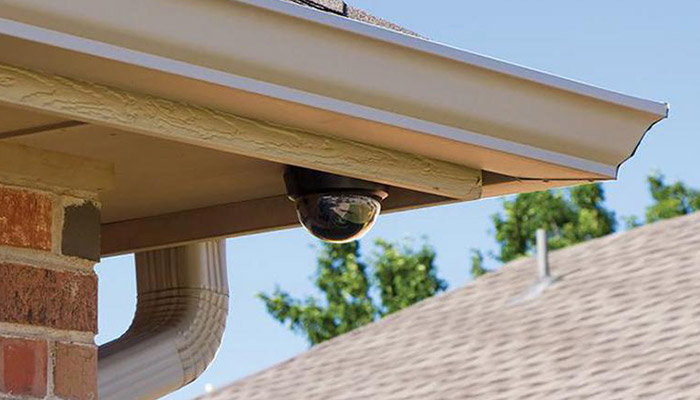
If you really don’t want cameras around — even cameras that don’t send any of the video to the cloud — then you can mount fake cameras just for the deterrent. Try to get a battery-powered model that mimics the same kind of lights on a real camera but doesn’t require any electrical lines or drilling.
More: Best home security cameras
Alarm systems
According to recent FBI data, homes without a security system are 300% more likely to be broken into. In a 1994 study of active burglars in St Louis, most burglars said they would avoid properties with security systems. “If I see an alarm out, like I say, they usually have them outside the house, I’ll leave them alone automatically,” one respondent said.
On the other hand, some research has shown that advertising an alarm can make homes even more attractive to burglars. “Alarms are seldom installed on residences containing little of value,” they say.
It’s still a great idea to have an alarm — the key is to think of it as one of many layers, not a single silver bullet.
The rise of smart home tech means there are more options in terms of budget, customization, and whether you want a 24/7 professional monitoring service or to just keep tabs on things yourself.
More: Best home alarm systems
Dogs and pet doors
Dogs are proven to dissuade would-be intruders, and in many cases, confront a threat. You don’t always need a giant mastiff or an aggressive shepherd, either — any attentive dog that will be vocal with strangers can work, regardless of size.
It’s common to put a pet door within a normal human door. But even when the pet door is small enough to block most humans, intruders have been known to use tools to widen the opening until they can get through.
You can create more secure framing around the opening to prevent this by installing pet doors in actual walls. It does take more work and creates anxiety around cutting into the side of your home — if you’re uncomfortable doing this, a local handyman should have no problem and it might cost $100-200.
It’s a good idea to cover any pet doors with a motion-activated light and/or security camera.
Think about ways you can secure that access when you’re away from home. Some people have a snap-on cover that goes over the pet door from the inside combined with a DIY piece of wood across that cover to create a physical barrier, for example.
Walls, fences, gates, and other perimeter barriers
You don’t have to make your home look like a scary fortress. Even a simple wire fence around a large property and some strongly-worded signage can make a difference.
That said, a common half-height fence or gate isn’t going to do much to prevent an intruder. For these barriers to really matter, they have to be difficult for a person to get over quietly and without being seen or getting hurt.
Unfortunately, meaningful perimeter barriers aren’t very common in the US and in some cases are prohibited by local ordinances or HOA rules.
Doing it right will take more investment than most of the other layers in this guide. You can use a local contractor or do it yourself with a few days of effort.
You can simply build robust barriers (eg. a solid wood or brick fence) and leave it at that. Or you can take it a step further and add active countermeasures that make it difficult and dangerous for someone trying to get over. Common examples include barbed wire, electrical wire, and broken glass stuck in mortar on top of a wall. The broken-glass method in particular can be done in ways that blend in relatively well.
Example project costs
Although you can dive into each product category, here’s a few high-level collections of products to give you a feel for what you can do to harden your home at various budgets.
